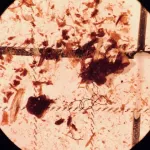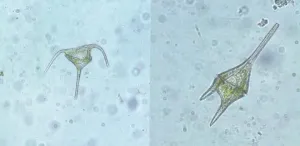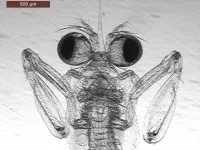(Press-News.org) Washington, D.C., April 29, 2021 - Two studies related to percutaneous coronary intervention (PCI) evaluating the use of risk-avoidance strategies and robotic-assisted technology, respectively, are being presented as late-breaking clinical science at the Society for Cardiovascular Angiography & Interventions (SCAI) 2021 Scientific Sessions. An analysis of strategically avoiding high-risk PCI cases indicates systematic risk-avoidance does not improve, and may worsen, the quality of hospital PCI programs. A study of a robotic-assisted PCI shows the technology is safe and effective for the treatment of both simple and complex lesions; this has the potential to address the occupational hazards associated with radiation exposure and procedure-related orthopedic injuries for physicians.
PCI is a nonsurgical procedure that uses a stent to open up narrowed blood vessels, improving blood flow to the heart. PCI is performed more than 500,000 times every year across the U.S. and is a critical procedure to treat the most common form of heart disease, coronary artery disease (CAD) - making it top of mind for researchers to analyze and improve how the interventional cardiology community performs PCI.
Prioritizing Patient Outcomes: Evidence for Eliminating Risk-Avoidance Strategies
Patients may be considered high-risk for complications related to PCI based on their age, history of disease or other risk factors specific to their condition. In these cases, operators may avoid performing PCI as to limit negative effects on performance metrics placed on hospital cath labs. However, the actual impact of these strategies on individual hospital performance had not been previously determined. New data indicates PCI should be offered to all eligible candidates, regardless of risk - highlighting the need to prioritize patient outcomes over performance metrics.
The analysis conducted through a collaboration between the Hospital of the University of Pennsylvania and Duke University Medical Center included all adult patients who underwent PCI at a participating hospital in the National Cardiovascular Data Registry CathPCI registry between January 1, 2017 and December 21, 2017. Risk-adjusted mortality rates were calculated for each hospital. To simulate a systematic risk-avoidance strategy, the highest predicted risk cases (top 10%) were eliminated for each hospital and risk-adjusted mortality rates were recalculated.
The findings showed that after removing the riskiest PCI procedures, there is no guarantee that the measured quality of a PCI program will improve. Of 1,565 hospitals were included in the analysis, 883 (56.4%) reduced their risk-adjusted mortality rate, but 610 (39.0%) hospitals increased their risk-adjusted mortality rate. Hospitals changed their risk-adjusted mortality rate by -0.14% on average with this strategy. There were no significant differences in the patient or procedural characteristics among hospitals which improved compared with those that worsened.
"Through our simulation, we saw that avoiding risky PCI cases is not always beneficial, and may take away from patient care. This signals the need to move away from performance metrics, as to provide each unique patient with the individualized care they need," said Ashwin Nathan, M.D., Hospital of the University of Pennsylvania. "We hope this will relieve some pressure and empower clinicians to refocus their approach in the cath lab."
Elevating Physician Safety: Benefits of Robotic-Assisted Technology
For interventional cardiologists performing PCI, there are known hazards including radiation exposure that can cause skin injuries and cancer. A new study demonstrates the safety and efficacy of a second generation robotic-assisted system for PCI, allowing physicians to control the procedure from a distance, rather than tableside. The final results of the PRECISION GRX Study reinforce the advantages of a robotic approach to protect physicians from medical imaging-related radiation, with excellent clinical and technical success.
The prospective international multicenter registry study enrolled patients with obstructive CAD with clinical indications for PCI treated with robotic PCI. The co-primary endpoints were clinical success - complete perfusion (final TIMI 3 flow) and less than 30% residual stenosis without in-hospital major adverse cardiac event - and technical success defined by robotic clinical success without the need for unplanned manual conversion.
Findings show the second generation CorPath GRX System for robotic-assisted PCI is safe, effective and achieves high rates of clinical and technical success across the spectrum of lesion complexity. The study enrolled 980 subjects (65.4 ±11.6 years 73.5% male; 1233 lesions) across 20 centers. Of the patients, 31.6% had acute coronary syndrome and 68.8% had ACC/AHA type B2/C lesions. Clinical success was achieved in 97.8% (955/976) of subjects and 98.2% of lesions treated robotically. Device technical success was achieved in 86.5% (848/980) of subjects and 89.8% of lesions treated robotically. Technical success was higher for type A/B1 lesions as compared to type B2/C lesions (95.5% vs 87.2%, p END
Two studies demonstrate new PCI approaches offer benefits to patients and physicians
SCAI 2021: Risk avoidance simulation demonstrates benefits of patient-forward approach to PCI and new data reinforces safety benefits of robotic PCI for cardiologists
2021-04-29
ELSE PRESS RELEASES FROM THIS DATE:
Lateral flow testing should not be used as a green light for activities
2021-04-29
The United Kingdom government plans to implement mass scale population testing for SARS-CoV-2 infection using Lateral Flow Devices (LFDs), yet the devices' sensitivity is unknown. A study published in the open access journal PLOS Biology by Alan McNally at University of Birmingham, UK, and colleagues suggests while LFDs are highly effective in identifying SARS-CoV-2 in individuals with high quantities of viral RNA present on the test swab, they are inaccurate at diagnosing infections in individuals with lower viral loads.
LFDs are increasingly used to increase testing capacity and screen asymptomatic populations for SARS-CoV-2 infection in mass surveillance programs, yet there are few data ...
Fish have been swallowing microplastics since the 1950s
2021-04-29
Forget diamonds--plastic is forever. It takes decades, or even centuries, for plastic to break down, and nearly every piece of plastic ever made still exists in some form today. We've known for a while that big pieces of plastic can harm wildlife--think of seabirds stuck in plastic six-pack rings--but in more recent years, scientists have discovered microscopic bits of plastic in the water, soil, and even the atmosphere. To learn how these microplastics have built up over the past century, researchers examined the guts of freshwater fish preserved in museum collections; they found that fish have been swallowing microplastics since the 1950s and that the concentration of microplastics in their guts ...
Hubble watches how a giant planet grows
2021-04-29
NASA's Hubble Space Telescope is giving astronomers a rare look at a Jupiter-sized, still-forming planet that is feeding off material surrounding a young star.
"We just don't know very much about how giant planets grow," said Brendan Bowler of the University of Texas at Austin. "This planetary system gives us the first opportunity to witness material falling onto a planet. Our results open up a new area for this research."
Though over 4,000 exoplanets have been cataloged so far, only about 15 have been directly imaged to date by telescopes. And the planets are so far away and small, they are simply dots in the best photos. The team's fresh technique for using Hubble to directly image this planet paves a new route for further exoplanet ...
New Geology articles published online ahead of print in April
2021-04-29
Boulder, Colo., USA: Thirty-one new articles were published online ahead of
print for Geology in April. Topics include shocked zircon from the
Chicxulub impact crater; the Holocene Sonoran Desert; the architecture of
the Congo Basin; the southern Death Valley fault; missing water from the
Qiangtang Basin; sulfide inclusions in diamonds; how Himalayan collision
stems from subduction; ghost dune hollows; and the history of the Larsen C Ice Shelf. These Geology articles are online at END ...
Plankton have a genome like no other
2021-04-29
The genome of single-celled plankton, known as dinoflagellates, is organized in an incredibly strange and unusual way, according to new research. The findings lay the groundwork for further investigation into these important marine organisms and dramatically expand our picture of what a eukaryotic genome can look like.
Researchers from KAUST, the U.S. and Germany have investigated the genomic organization of the coral-symbiont dinoflagellate Symbiodinium microadriaticum. The S. microadriaticum genome had already been sequenced and assembled into segments known as scaffolds but lacked a chromosome-level assembly.
The team used a technique known as Hi-C to detect ...
Baby mantis shrimp don't pull their punches
2021-04-29
DURHAM, N.C. - Mantis shrimp don't need baby food. They start their life as ferocious predators who know how to throw a lethal punch.
A new study appearing April 29 in the Journal of Experimental Biology shows that larvae of the Philippine mantis shrimp (Gonodactylaceus falcatus) already display the ultra-fast movements for which these animals are known, even when they are smaller than a short grain of rice.
Their ultra-fast punching appendages measure less than 1 mm, and develop right when the larva exhausts its yolk reserves, moves away from its nest and out into the big wide sea. It immediately begins preying on organisms smaller than a grain of sand.
Although they accelerate their arms almost 100 times faster than a Formula One car, Philippine mantis shrimp larvae are slower ...
Combining solar panels and lamb grazing increases land productivity, study finds
2021-04-29
CORVALLIS, Ore. - Land productivity could be greatly increased by combining sheep grazing and solar energy production on the same land, according to new research by Oregon State University scientists.
This is believed to be the first study to investigate livestock production under agrivoltaic systems, where solar energy production is combined with agricultural production, such as planting agricultural crops or grazing animals.
The researchers compared lamb growth and pasture production in pastures with solar panels and traditional open pastures. They found less overall but higher quality forage in the solar pastures and that lambs raised in each pasture type ...
High vaccination rate is key to course of COVID-19 pandemic, modeling shows
2021-04-29
ROCHESTER, Minn. -- The Mayo Clinic data scientists who developed highly accurate computer modeling to predict trends for COVID-19 cases nationwide have new research that shows how important a high rate of vaccination is to reducing case numbers and controlling the pandemic.
Vaccination is making a striking difference in Minnesota and keeping the current level of positive cases from becoming an emergency that overwhelms ICUs and leads to more illness and death, according to a study published in Mayo Clinic Proceedings. The study, entitled "Quantifying the Importance of COVID-19 Vaccination to Our Future Outlook," outlines how Mayo's COVID-19 predictive modeling can assess future trends based on the pace of vaccination, and how vaccination trends are crucial ...
How long is a day on Venus? Scientists crack mysteries of our closest neighbor
2021-04-29
Venus is an enigma. It's the planet next door and yet reveals little about itself. An opaque blanket of clouds smothers a harsh landscape pelted by acid rain and baked at temperatures that can liquify lead.
Now, new observations from the safety of Earth are lifting the veil on some of Venus' most basic properties. By repeatedly bouncing radar off the planet's surface over the last 15 years, a UCLA-led team has pinned down the precise length of a day on Venus, the tilt of its axis and the size of its core. The findings are published today in the journal Nature Astronomy.
"Venus is our sister planet, and yet these fundamental properties have remained unknown," said Jean-Luc Margot, a UCLA professor of Earth, planetary and space sciences who led the research.
Earth ...
Smart cell therapies for solid cancers 'ready to move towards clinical trials'
2021-04-29
Immunotherapies that fight cancer have been a life-saving advancement for many patients, but the approach only works on a few types of malignancies, leaving few treatment options for most cancer patients with solid tumors. Now, in two related papers published April 28, 2021 in Science Translational Medicine, researchers at UCSF have demonstrated how to engineer smart immune cells that are effective against solid tumors, opening the door to treating a variety of cancers that have long been untouchable with immunotherapies.
By "programming" basic computational abilities into immune cells that are designed to attack cancer, the researchers have overcome a number of major hurdles that have kept these strategies ...
LAST 30 PRESS RELEASES:
Strategic river sensors could have forewarned of Texas Camp flood disaster
Drone sampling of whale breath reveals first evidence of potentially deadly virus in Arctic
Roman soldiers defending Hadrian’s Wall infected by parasites, study finds
Pinochet’s prisoners were tormented with music but still found solace in it, a new book reveals
Fertility remains high in rural Tanzania despite access to family planning
AI-assisted device can improve autism care access
Kinetic careers
Uncovering how parasitic plants avoid attacking themselves to improve crop resistance
Nanoparticle vaccine strategy could protect against Ebola and other deadly filoviruses
Study finds brain care score can predict risk of stroke across racial groups
Key lung immune cells can intensify allergic reactions
Do hormones explain why women experience more gut pain?
New materials conduct ions in solids as easily as in liquids
Breakthrough of the Year: Renewable energy begins to eclipse fossil fuel-based sources
LLM use is reshaping scientific enterprise by increasing output, reducing quality and more
Introducing LightGen, a chip for ultra-fast, ultra-efficient generative AI
Astronomers see fireworks from violent collisions around nearby star
ACC/AHA issue new guideline on managing congenital heart disease in adults
Cosmic crash caught on camera
Is talented youth nurtured the wrong way? New study shows: top performers develop differently than assumed
Ants: An untapped resource in the development of antibiotics?
Archaeologists use AI to create prehistoric video game
Mitochondria migrate toward the cell membrane in response to high glucose levels
Tiny viral switch offers hope against drug-resistant bacteria
Most parents aware of early peanut introduction guidelines, but confused about details
HPV vaccine can protect against severe lesions of the vulva and vagina
Virtual care provision and emergency department use among children and youth
Quadrivalent HPV vaccine and high-grade vulvovaginal lesions
Insights into dry eyes gained from stem cell-derived tear glands
Researchers identify 166 human pluripotent stem cell lines available for use in clinical applications
[Press-News.org] Two studies demonstrate new PCI approaches offer benefits to patients and physiciansSCAI 2021: Risk avoidance simulation demonstrates benefits of patient-forward approach to PCI and new data reinforces safety benefits of robotic PCI for cardiologists





